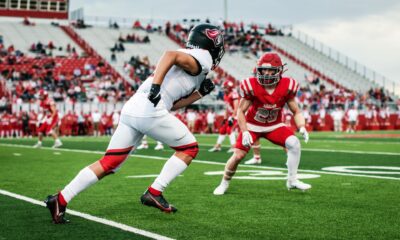Uncategorised
The Educational Journey to Becoming a Sports Medicine Practitioner

The Educational Journey to Becoming a Sports Medicine Practitioner
Sports medicine, while not the most popular or common representation of medical training, does play an important role in society. The specialization, however, does make it quite challenging. There is just not as many openings or a demand for this type of specialty as with other more functionally based medicine like resident nursing.
There will always be a need for this nuanced perspective. From high school locker rooms, to physical therapists offices, and sports surgeons, the need is there. For those individuals who have the interest, talent, intelligence, and gumption to work exceedingly hard on a degree of this caliber, here is what the educational journey to becoming a sports medicine tends to look like.
Go to School
The first step is a bit obvious, but still needs to be stated: Go to college— specifically to get a bachelor’s degree. It is important, however, to consider step two — going to medical school— so that means planning accordingly and putting oneself into a degree program that has an alignment with that type of future educational path.
The classes and course work should reflect that desire and as such lean heavily into the sciences such as biology, chemistry, anatomy, and medicine. Just like nursing school,medical schools require that a certain number of fundamental courses be met.
Therefore, doing research beforehand about what medical schools generally look for and how those program requirements differ from place to place is wise to consider.
Medical School
Actually getting into medical school is the first part of this second step, and a difficult one at that. From there comes the completion of a medical degree. An M.D. (Doctor of Medicine) or a D.O. (osteopathic program) are good choices. This program can typically be broken into two, two-year segments equaling about 4 years total (depending on how long things take).
The first two years lean toward learning about the human body, medical ethics, and the interconnectedness of biological systems; the later brings interactions with patients, and other physicians in clinical work.
Residency
Residencies are where all the years of learning and practice really begin to culminate in experience. There are multiple options for where and how to get residency. Some examples are practicing family medicine, internal, pediatrics, or emergency medicine. Orthopedic surgery is another path.
Fellowship
Sports medicine doctors are required to also complete a one or two year sports medicine fellowship. This, in many ways, is just a continuation of residency but has more of an emphasis on the surgical treatment of sports injuries. Different parts of the body or specific injuries can become the focus.
Complete a Licensure and Certification
No matter if the path chosen is as a sports medicine doctor or an orthopedic surgeon, both need to pass a licensing exam. Medical doctors take the U.S. Medical Licensing Exam (USMLE); Osteopathic doctors take the Comprehensive Osteopathic Medical Licensing Exam (COMLEX-USA). Two parts are taken during medical school, and the last is taken while in residency.
Read more on sports below:
- What is the fastest tennis serve of all time?
- The fastest rugby player ever
- Who are the best penalty takers of all time?
-

 News1 month ago
News1 month agoThe Best Male Tennis Players of All Time
-

 Uncategorised1 month ago
Uncategorised1 month agoWhat Dinosaur Has 500 Teeth?
-

 News1 month ago
News1 month agoThe Fastest Rugby Players Ever
-

 Football1 month ago
Football1 month agoThe Best Penalty Takers of All Time
-

 Football1 month ago
Football1 month ago10 of the most underrated footballers in the world right now
-

 Football1 month ago
Football1 month agoPlayers with the most goals in a Premier League season
-

 Football1 month ago
Football1 month agoWho is the Fastest Football Player in the World?
-

 Football1 month ago
Football1 month agoChelsea’s Possible Lineup For Next Season




















